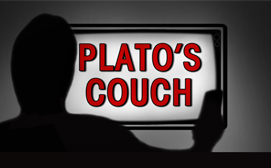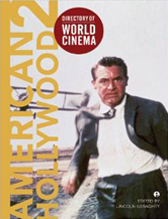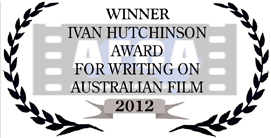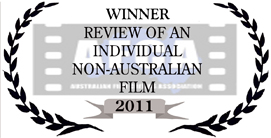
REVIEW: David Lynch: The Art Life
“I had this idea that you drink coffee, you smoke cigarettes and you paint, and that’s it. Maybe girls come into it a little bit. But basically it’s the incredible happiness of working and living that life”
– David Lynch on The Art Life
David Lynch recently caused a stir when, in an interview with the Sydney Morning Herald, he confirmed that Inland Empire (2006) would be his final feature film. Such claims should almost certainly be taken with the caveat “for now”. This is, after all, the same director who announced back in early 2015 that he was walking away from the highly anticipated Twin Peaks revival and that the show would in all likelihood proceed without him. Helmed by Lynch, the third season of Twin Peaks releases on Showtime in a matter of days. When it comes to David Lynch, things are rarely as they appear on the surface.
The same could be said for Lynch’s filmmaking career. A cursory glance across his filmography reveals a body of work that is far more diverse than the prominent psychosexual noir stylings – all too easily summed up as “Lynchian” – might have you perceive. DUNE (1984), Twin Peaks: Fire Walk with Me (1992), The Straight Story (1999) and even Inland Empire confirm Lynch as a director unafraid to defy the neat and occasionally narrow expectations of his audience. In art, as in person, Lynch rejects conventionality. Given that, it should be unsurprising that despite his reputation for reclusiveness (and reluctance to discuss his work) that David Lynch: The Art Life offers an uncharacteristically intimate and open portrait of the man, his upbringing and his art.
From the opening shot in which Lynch appears seated in profile, cigarette in hand, his view fixed out of frame, the documentary’s mood is one of softly spoken contemplation and reflection. Narrating stories of his childhood, from the idyllic Idaho to the darker recesses of Virginia and later Philadelphia, one immediately gets the sense of a man caught between contrasting worlds, a recurring theme across his various art forms. This deliberate association of personal memory with Lynch’s work is further reinforced through the drawings, paintings, photography, archival imagery and grainy home movies that accompany his narration. In one such recollection, retold with a trademark dream-like charm Lynch describes the first time he witnessed a naked woman. Though paired with abstracted photographs of the female form, the description simultaneously conjures memories of the scene where Dorothy Vallens (Isabella Rossellini) emerges naked and battered on Jeffrey’s front lawn in Blue Velvet (1986).
The strategy of framing Lynch’s artwork as representations of his personal experiences is key to this documentary and it serves to reinforce the director’s auteurist credentials even as it sidelines his film work, focusing instead on his art life prior to Eraserhead (1977). It is in Lynch’s childhood and early years as an artist that director Jon Nguyen (and co-directors Rick Barnes and Olivia Neergaard-Holm) attempt to locate the origins for the recurring themes and visual motifs – e.g. the interplay between surfaces and dark interiors, the fascination with industrial forms and the recurring female figures – that inhabit Lynch’s oeuvre. But more significantly, the approach here redresses a common misperception regarding Lynch’s art: that his painting, sculpture and photographic work are somehow secondary in value to his filmmaking endeavours. If anything, David Lynch: The Art Life convincingly situates Lynch’s cinema as an extension of the artistic practices he’d developed long before Eraserhead, as his earlier short films Six Men Getting Sick (Six Times) (1967), The Alphabet (1968), and The Grandmother (1970) ably attest.
Given the way earlier documentaries have tended to downplay Lynch’s non-cinematic art, and adopted more common ‘making of’ style approaches with cast/crew interviews – e.g. David Lynch: Pretty as a Picture (1996) and David Lynch: One (2006) – The Art Life offers a far more personal and studious depiction of the director as artist. Stylistically, the film also comes closest to reproducing the signature moodiness of Lynch’s cinema through the play of images that fade to black, degraded film stock and the steady, occasionally discordant soundtrack that underscores the film’s catalogue of visuals. But beyond the formal sensibility the strength of the documentary lies in the way it manages to be both an endearing study of the artist but not at the expense of Lynch’s trademark enigmatic persona. Like he has for much of his career, Lynch teases us with insights and revelations but in the end, particularly when it comes to the artwork, much is left up to the audience to decipher.
Should Lynch remain true to his vow never to return to filmmaking, one thing that The Art Life makes abundantly clear, is that alone in his art studio or spending time with his young daughter Lulu, the one-time feature director will be perfectly at home with that decision.






RSS feed for comments on this post. TrackBack URI